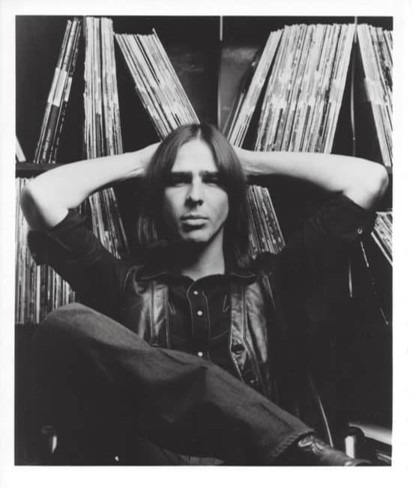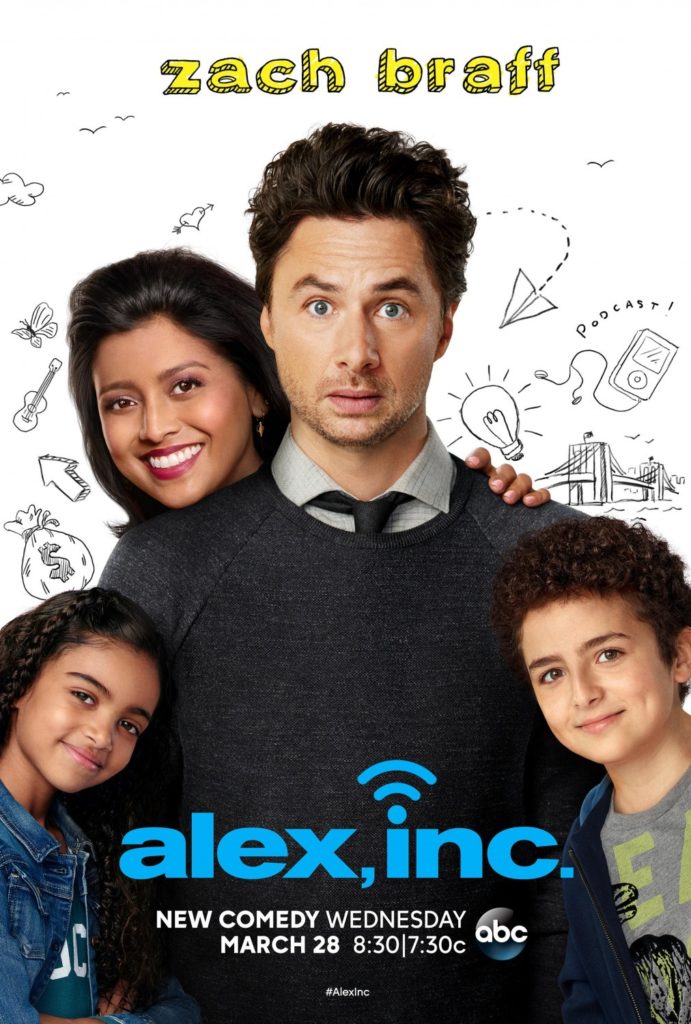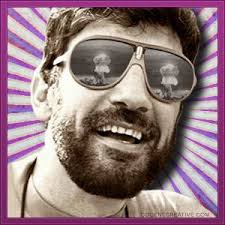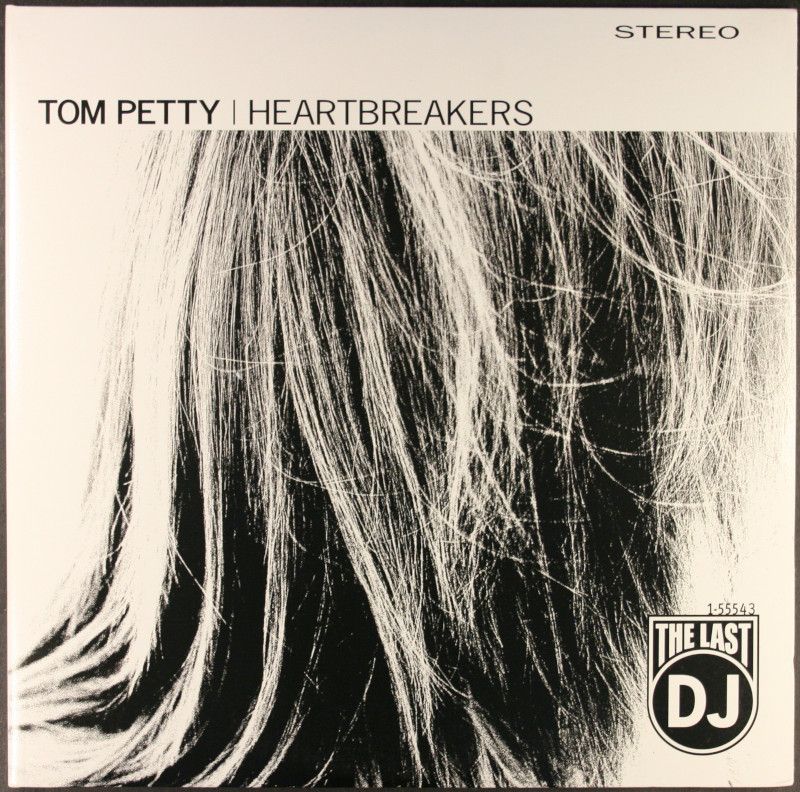
Fitting, isn’t it, that a blog post about the epitome of cool radio – Jim Ladd – is staring right at us from the top of this blog. I love the knowing expression on his face. He has it, he knows it, and he wants to tell us all about it.
This was one of my favorite posts from this past year, sadly written following the death of actor Howard Hesseman, better known as Dr. Johnny Fever, the face of “WKRP in Cincinnati.”
It comes out an important junction in modern radio history. Due to economic factors on the one hand, and strategic efficiency on the other, more and more companies are pruning their local talent lineups. And yet, our Techsurveys continue to tell us that radio’s biggest fans – the loyal listeners who are still here – are more connected to personality than they are to music.
And yet, most radio companies are investing more resources in their music programming than their on-air teams – recruiting new talent, nurturing emerging personalities, and retaining their most valuable ambassador hosts. – FJ
January
Sometimes you wonder how all those TV pilots, shows, and series get “greenlit” when there so many crashing failures. We all have our favorite shows – especially sitcoms – the ones that kept up laughing for years.
 But then there are the ones that never should have seen the light of day. In recent years, my favorite sitcom loser was “Alex, Inc.” starring the always entertaining Zach Braff. But not this time. The show was loosely based on the real-life adventures of Alex Blumberg and his podcast, “Start-Up.” It was premised on what happens when the nerdy public radio storyteller leaves the cushy confines of the network to strike out on his own with his podcast company.
But then there are the ones that never should have seen the light of day. In recent years, my favorite sitcom loser was “Alex, Inc.” starring the always entertaining Zach Braff. But not this time. The show was loosely based on the real-life adventures of Alex Blumberg and his podcast, “Start-Up.” It was premised on what happens when the nerdy public radio storyteller leaves the cushy confines of the network to strike out on his own with his podcast company.
It lasted one season, and was probably cancelled by the network after the second episode. Let’s face it – we learned two things from “Alex, Inc.”
First, podcasts had entered the entertainment mainstream. But second, podcasts aren’t very “sitcom funny.” Only Woody Allen could pull that off with regularity. Podcasters may be smart, clever, and wonky, but seldom are they cool.
And to that point, I wouldn’t expect a sitcom anytime soon about the trials, tribulations, and antics of an algorithimist trying to make her way through a big music playlist company, like Spotify or Pandora. They may be fun places to work – free food, ping pong tab;es, pinball machines – but they are not especially cool settings where amazing stories are told. Its hard to imagine anything zany happening at Apple Music.
But then there’s radio. And while it’s been some time since a successful TV sitcom revolved around an air studio, “Frazier” is one that many fondly remember. I blogged about its reboot last year, and we’re still waiting for Kelsey Grammer and a new cast to entertain us with craziness from the world of radio, that is, if Frazier is still a talk show host.
The show that radio veterans most lovingly recall, however, is “WKRP In Cincinnati,” a sitcom that charmed and entertained America in the late 70’s. It aired during the era when I worked as a programmer at a rock station, and I’ve blogged extensively about this show and what it meant to radio. Back in 2018, I wrote about creator Hugh Wilson, and his crazy idea for a sitcom based on a fictitious rock radio station.
It aired during the era when I worked as a programmer at a rock station, and I’ve blogged extensively about this show and what it meant to radio. Back in 2018, I wrote about creator Hugh Wilson, and his crazy idea for a sitcom based on a fictitious rock radio station.
And then last year, I blogged about the guy who brilliantly played the sleaziest radio salesman of all time – Herb Tarlek. Veteran actor Frank Bonner was marvelous in this role, always finding new and different flimflam schemes. I think we loved Herb because he reminded so many of us of real-life radio sellers we knew and (mostly) loved. Not to mention his garish taste in clothes.
But yesterday, WKRP’s morning guy and spiritual leader left the planet. Dr. Johnny Fever – played by Howard Hesseman – personified everything about what it meant to be a cool jock. He was the patron saint of jaded DJs. Hesseman passed away yesterday at the age of 81. He dove into the Johnny Fever character with the reckless abandon of a wild and crazy jock, battered by management teams in his past, but ready for one more run at redemption and stardom on the Cincinnati airwaves.
In this segment, the erstwhile Dr. Johnny Fever does a break that would have consultants cringing…and laughing. (At least, it’s short.)
https://www.youtube.com/watch?v=oMOaJbbaQoI
And watching those old “WKRP” videos reminded me, yet again, that radio has had an amazing run over the last many decades, but in the middle of the “audio renaissance,” the industry is trying to get its mojo back amidst a digital cornucopia of choice.
I took on some of the challenge of addressing this last week with a 2-parter about radio and new music discovery – where it’s gone and how to get it back. Hundreds of you responded to this post with ideas of your own. Most often, the feedback revolved around this notion that radio has lost its fastball, making less of an impact with each passing year.
At the same time, Sean Ross took his best shot at the same theme, and came up with a definition for what he calls “real radio”:
“’Real Radio’ is still defined for me by doing what a playlist cannot do — putting together music in an order that is different each time, but not random; telling me what’s happening in my town, or yours; advocating for the music it introduces to me; being punctuated by people who are funny or thought-provoking. Part of the initial appeal when I began listening, and part of radio’s identifying DNA now, is the shared experience. But I know that AI and voice-tracking have made the day imminent when the deejay wishes you happy birthday over your party playlist.”
Blogger Dick Taylor riffed off Sean’s effort in a post called “What Purpose Does Radio Serve in 2022?” In his essay, he looked at all the things radio used to do – traffic, school closings, new music discovery, breaking news – most of which have been usurped by Internet brands and platforms. Dick urges radio broadcasters to find their “Why” or else face more aimlessness.
Both guys have the right idea, as did much of the social media strings that followed my posts. But I think the essence of what radio must become is what it used to be:
Cool
When Jeff Smulyan was hawking NextRadio, his mantra was “We have to make radio cool again.” But the “cool factor” rarely comes from technology or a new gadget.
It’s that intangible human factor that defines cool. It’s radio’s personalities. The producers of “WKRP” used the Johnny Fever character to parody legitimately cool, real-life DJs who dominated the American airwaves in the 70’s and 80’s.

When “WKRP” first aired on CBS-TV in 1978, these jocks were everywhere on the radio dial, and not just in the biggest markets. Seemingly every city and town had at least a couple of stellar DJs who were music experts, and knew their way around the backstage areas of concert venues. Many forged relationships with the artists themselves. When bands came to town, they made it a point to drop into the station to schmooze with these DJs for an in-studio interview.
Markets like New York, Detroit, Cleveland, Chicago, and so many others had several great rock radio stations, boasting many cool and talented jocks. Names like Scott Muni, Kid Leo, Arthur Penhallow, and Charles Laquidara (pictured) were the star QBs at their respective stations. They were tastemakers, influential not just at their stations, but industry-wide.
And then there was L.A. radio with two behemoths, KLOS and KMET, duking it out for rock radio dominance. Jim Ladd, whose photo you see at the top of this post always personified the cool rock DJ to me, and apparently to everyone else.
rock DJ to me, and apparently to everyone else.
Ladd was the inspiration for Tom Petty’s “The Last D.J.,” a song about the homogenization of radio personalities and corporate control of the industry.
In the comments I received on my post, many focused on this growing void on stations in big markets and small. Paul Ingles, who I worked alongside at WNCX in Cleveland, left this analysis on Facebook:
“FM radio happened in the late 60s and early 70s because corporations and station owners didn’t know WHAT to do with it so they gave it over to young freaks who knew how to speak to their tribe. It succeeded by ignoring the tightly formatted rules of the day. The drum beat was spread by word of mouth..”
Even though it was a network TV show, Hugh Wilson’s radio sitcom – and its wild and crazy guys and gals – had a ring of authenticity, insipid laugh track and all. Even “The Big Guy,” the hapless Mr. Carlson (brilliantly portrayed by Gordon Jump) realized that WKRP was nothing, if not for its jocks and its programming team.
How many kids watching that show grew up to be the next generation of DJs, PDs, or music directors, thanks to Johnny Fever, Venus Flytrap, Andy Travis, and Bailey Quarters? (I’m not sure many were motivated to pursue jobs in radio sales or news, based on the Herb Tarlek or Les Nessman characters.)
And how about the millions of viewers who watched Dr. Johnny Fever and the “WKRP” crew and wished they had gone into radio?
Johnny Fever may have been a TV sitcom caricature of a rock radio DJ, but you rooted for him. He would never have worn underwear on his head, body shamed famous celebrities, or even started a podcast. He was too cool for all that.
But that’s the point. Life imitates art. Or maybe in this case, it’s the other way around.
“WKRP” and Howard Hesseman made radio look like a cool job and a great place to work.
Because it was.
Thanks to Anita Wadd for the heads-up.
- What To Do If Your Radio Station Goes Through A Midlife Crisis - April 25, 2025
- A 2020 Lesson?It Could All Be Gone In A Flash - April 24, 2025
- How AI Can Give Radio Personalities More…PERSONALITY - April 23, 2025





I’m not sure which concept has done the most damage to radio, the idea of appealing to the lowest common audience denominator, or the idea “What you don’t play can’t hurt you.”
Add the “It’s my format, not the talent who will make the station successful” consultants who sell their services by selling talent as the “replaceable monkey in the box” concept, which has morphed into the VT/syndication culture that has made too much radio programming banal blather that simply doesn’t connect with the audience.
Meanwhile, spreadsheet jockies are trying to figure out how to cut their way to prosperity as honchos lament shrinking revenues.
You packed a lot into three paragraphs, Brian. A lot of bad judgments have been made along the way, and most broadcasters continue to struggle with identifying what matters to fans…and even advertisers.
This blog just reminded me of how FM emerged from what I thought was dull, depressing music of the fifties and sixties. The syrupy sounds of Jackie Gleason, The Ray Conoff Singers, 101 String along with other relaxing elevator music formats. Excellent music to be riding along in the back seat of my parents 1964 Buick coming home from the grand parents dinner to watch Lawrence Welk.
Then somewhere in the late sixties FM, young hip DJ’s, women and men, plus they were talking to us like we might have a brain. No, “Don’t touch that dial, Cool Kat Charlie comin at you with the top 20 Cool Kat Charlie weekly countdown for all you Cool Hip Cats out there!
Thanks for the memory.
Thanks for these thoughts, Mark, reflecting a lot of radio fans out there who found FM radio to be a wonderful alternative to AM Top 40 from those days.
While I can’t truly follow the show itself (since it appears to only exist in Portuguese), I can’t help but think of Os Filhos do Rock–a historical/musical drama from the mid-2010s that’s about Portugal’s “rock boom” of the early ’80s (and which, not surprisingly, I only came across recently).
While the primary focus is on the band Os Barões, several of the regular characters have ties to radio–most notably, star DJ/tastemaker Xavier Bastos (who might be somewhere between Dr. Johnny Fever and Andy Travis). Ironically, when the series originally aired, one promotional component had the actor who played Xavier Bastos do (in character) a real version of “his” radio show that was about both Os Barões and real-life figures from the era (some of whom were already dramatized in the series).
https://pt.wikipedia.org/wiki/Os_Filhos_do_Rock
The movie and TV industries have historically struggled to reflect a “real radio station” environment. WKRP was a parody, but a pretty good one. And that’s because its creator/producer/writer, Hugh Wilson, was a former radio guy telling radio stories. Thanks, as always, Eric.
WKRP was all that. We had the opportunity to do the famed Turkey Drop promotion at WYSP, bringing in Les Nesman (Richard Saunders) one year and The Big Guy (Gordon Jump) plus Nesman the next. Hearing Gordon Jump say “with God as my witness, I thought turkeys could fly,” live over WYSP still ranks with my all time favorite moments.
But if I could share a story about how cool and powerful Jim Ladd is. At KLSX we did a free concert in a park in Orange County (can’t remember which artist but a decent name Classic Rocker drawing 15,000.
We needed to leave the park clean so we passed out trash bags, which weren’t getting much use.
Ladd hops up on stage and says: “How ya doing everybody I’m Jim Ladd.” Everyone froze.
“Hey we‘ve been allowed to have this really cool free concert behind the Orange curtain and we’d like to be invited back to do it again. But that requires your help. We need to leave this park pristine. I don’t want to see so much as a cigarette butt or gum wrapper. We’re passing out trash bags. Fill one up and we’ll do this again.
Thank you for being my friend.”
Mic drop. Off he sped home. And there wasn’t a single cigarette butt or gum wrapper in that park. It was cleaner than we found it. That was the power of the Lonesome LA Cowboy, Jim Ladd, the coolest jock I ever knew.
The Ladd story is indeed a classic. Thanks for sharing it, Andy.
I doubt that I have an answer to the question, because I am closer to what Brian’s second paragraph in operation, but partially breaking the rule he decries in his first.
I am realizing that what I had feared a decade or so back has to a great degree come to pass: During the “satellite format will save radio” era, we destroyed the farm club for new air talent. I hear people on the air who have NO business being there, and I’m hearing them in rated markets, for crying out loud!
But, knowing Jim Ladd personally myself, I agree completely with Andy. Coolest on-air (and off-air) personality in history.
Appreciate the comment, K.M.
Mandela effect. It’s Frasier.
Or Roz?
I think the 1978 movie “FM” (starring Michael Branden, Eileen Brennan and Martin Mull) was the inspiration for “WKRP.”
The movie, however, wasn’t well acted but made us fall in love with Rock Radio. WKRP, on the other hand, still makes many of us who worked in the industry, laugh at who it DOES imitate life behind the mic.
Hugh Wilson is no longer around, so we can’t ask him. My suspicion is that give his background in radio and writing, the “WKRP” concept was on the drawing board. But perhaps “FM” emboldened and encouraged him to move on it. We all can be thankful he did. Thanks for the comment, Darryl.
And Marshall McLuhan would lament the passing and extinction of the “jungle drums” that once upon a time united all.
Insightful & on-point, as always, Fred. You are a lighthouse on the shore line. Any ships still out there?
curious in New Orleans,
Airlift Mike at http://www.airliftproductions.com
Slugging away, Mike. Or in your parlance, trying to stay above it. Thanks for the kind words.